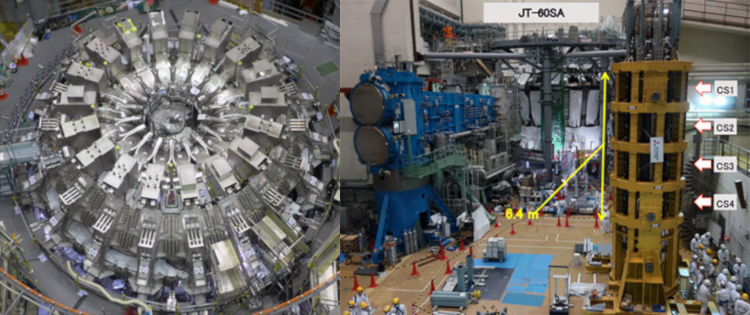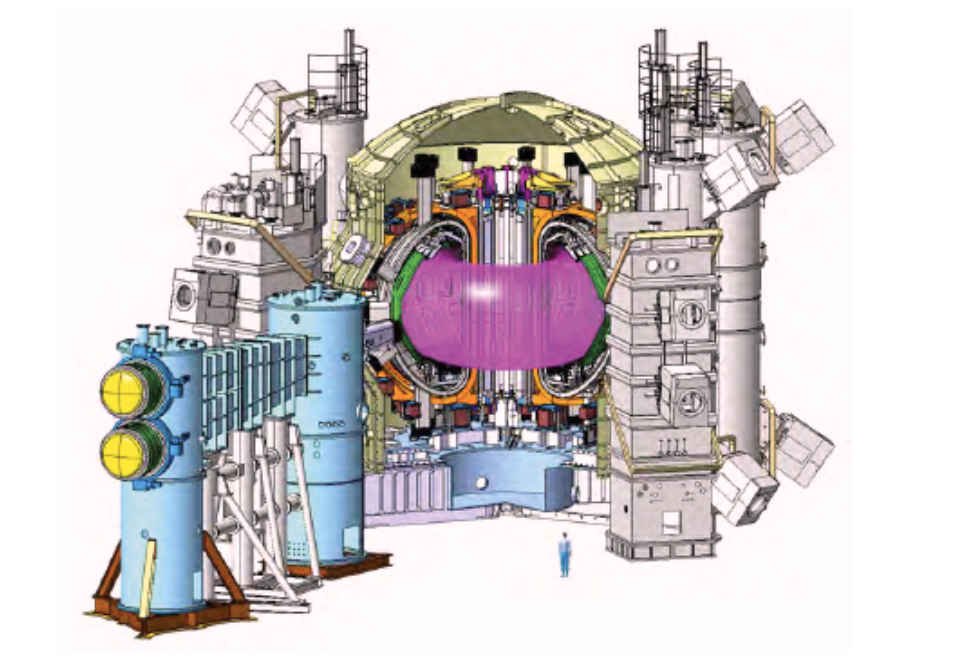
After more than 8 hectic years, the assembly of the JT-60SA fusion device is finally complete. This achievement is a major milestone that brings the world’s currently largest superconducting tokamak ready for operation.
EUROfusion and the Fusion Energy Forum of Japan have led the JT-60SA project to build a tokamak able to confine 100 million degree plasmas. The facility of the Japanese-European tokamak is located at Naka (Japan) under the auspices of the National Institute for Quantum and Radiological Science and Technology (QST) which has operated various tokamaks such as JT-60 or JT-60U since 1985.
JT-60SA will start its operation later this year diving into the study of hydrogen and deuterium plasmas in support to ITER and DEMO preparation. The mission is to produce steady-state scenarios at high beta and density that will make key contributions to the understanding of plasma physics. During ITER’s operation, JT-60SA will have the role of an ITER-satellite tokamak due to its relevance for the fusion energy roadmap.

JT-60SA is a major engineering achievement on its own. Its central solenoid is one of the largest coils in the world. With 2.1m in diameter, 9.5m in height and 100 tons in weight, it is able to produce a 10T magnetic field. The vacuum vessel weighs ~300 tons and its diameter is 10m and its height is 6.2m.
Regarding the components that heat the plasma, there are two neutral beam injection (NBI) methods, P-NBI (24 MW at 85 keV) and N-NBI (10 MW at 500 keV). Together with the electron cyclotron heating at 7 MW, they make a total 41 MW of heating power.
These impressive features, among others, make JT-60SA one of its kind, ready to make important contributions to the realization of fusion energy.
